Unique 1.5m year-old ice to be melted to unlock mystery
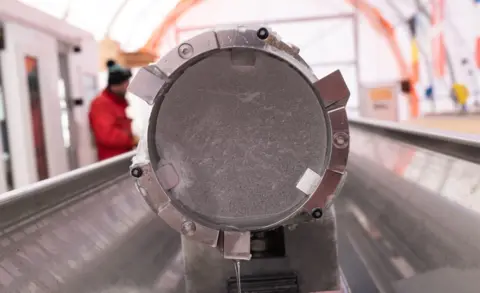 PNRA/IPEV
PNRA/IPEVAn ice core that may be older than 1.5 million years has arrived in the UK where scientists will melt it to unlock vital information about Earth's climate.
The glassy cylinder is the planet's oldest ice and was drilled from deep inside the Antarctic ice sheet.
Frozen inside is thousands of years of new information that scientists say could "revolutionise" what we know about climate change.
BBC News went inside the -23C freezer room at the British Antarctic Survey in Cambridge to see the precious boxes of ice.
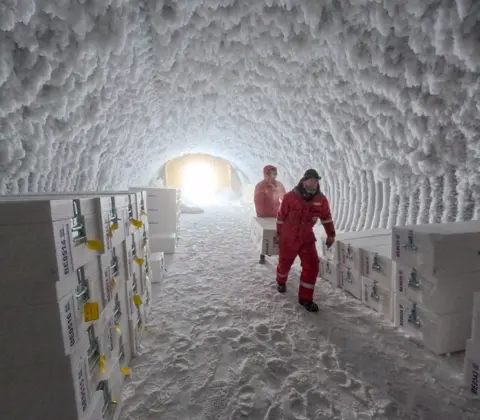 PNRA/IPEV
PNRA/IPEV"This is a completely unknown period of our Earth's history," says Dr Liz Thomas, head of ice core research at the British Antarctic Survey.
Red warning lights flash above the door, and inside there is an emergency escape hatch into a tunnel in case something went wrong.
The rules say we could only go inside for 15 minutes at a time, wearing padded overalls, boots, hats and gloves.
Our camera's electronic shutter froze shut and our hair started to crackle as it turned icy.
On a worktop next to stacked boxes of ice, Dr Thomas points out the oldest cores that could be 1.5 million years old. They shine and are so clear we can see our hands through them.
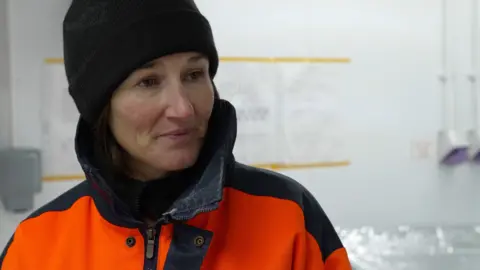 BBC News
BBC NewsFor seven weeks, the team will slowly melt the hard-won ice, releasing ancient dust, volcanic ash, and even tiny marine algae called diatoms that were locked inside when water turned to ice.
These materials can tell scientists about wind patterns, temperature, and sea levels more than a million years ago.
Tubes will feed the liquid into machines in a lab next door that is one of the only places in the world that can do this science.
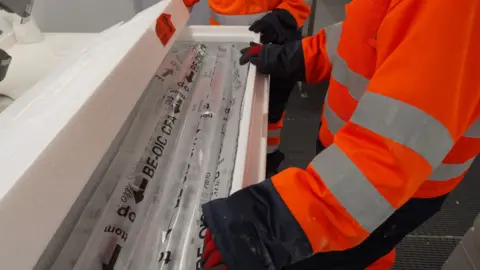 BBC News
BBC NewsIt was a huge multinational effort to extract the ice cores in Antarctica, at a cost of millions. The ice was chopped into 1m blocks and transported by boat and then in a cold van to Cambridge.
Engineer James Veal helped to extract the ice close to the Concordia base in eastern Antarctica.
"To hold that in my carefully gloved hands and be very careful not to drop the sections - it was an amazing feeling," he says.
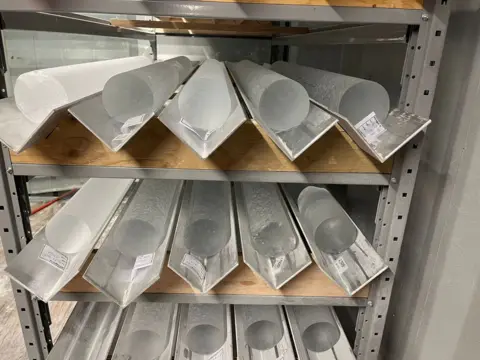 PNRA/IPEV
PNRA/IPEVTwo institutions in Germany and Switzerland also have received cross-sections of the 2.8km core.
The teams could find evidence of a period of time more than 800,000 years ago when carbon dioxide concentrations may have been naturally as high or even higher than they are now, according to Dr Thomas.
This could help them understand what will happen in our future as our planet responds to warming gases trapped in our atmosphere.
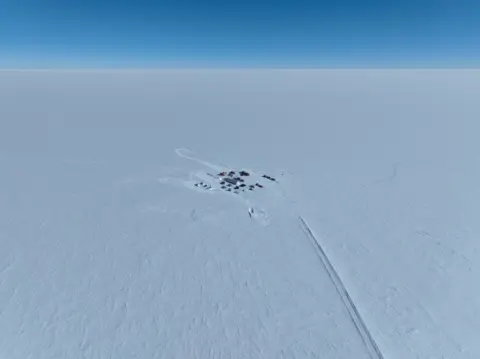 PNRA/IPEV
PNRA/IPEV"Our climate system has been through so many different changes that we really need to be able to go back in time to understand these different processes and different tipping points," she says.
The difference between today and previous eras with high greenhouse gases is that now humans have caused the rapid rise in warming gases in the last 150 years.
That is taking us into unchartered territory, but the scientists hope that the record of our planet's environmental history locked in the ice could give us some guidance.
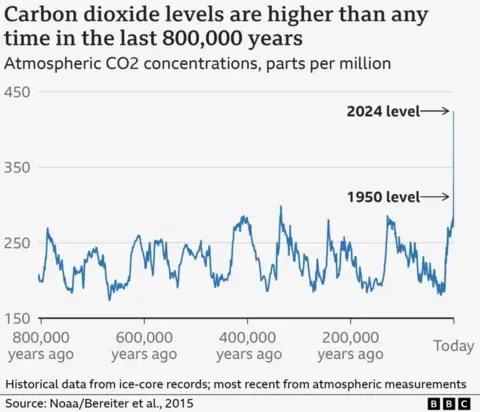
The team will identify chemical isotopes in the liquid that could tell us the wind patterns, temperatures, and rainfall for a period of time between 800,000 and up to 1.5 million years ago or possibly more.
They will use an instrument called an inductively couple plasma mass spectrometer (ICPMS) to measure over 20 elements and trace metals.
That includes rare earth elements, sea salts and marine elements, as well as indicators of past volcanic eruptions.
The work will help scientists understand a mysterious change called the Mid-Pleistocene Transition 800,000 to 1.2 million years ago when the planet's glacial cycles suddenly changed.
 BBC News
BBC NewsThe transition from warmer eras to cold glacial eras, when ice covered a lot more of Earth, had been every 41,000 years but it suddenly switched to 100,000 years.
The cause of this shift is one of the "most exciting unsolved questions" in climate science, according to Dr Thomas.
The cores may have evidence of a time when sea levels were much higher than they are now and when the vast Antarctic ice sheets were smaller.
The presence of dust in the ice will help them understand how the ice sheets shrunk and contributed to sea level rise - something that is a major concern this century.
